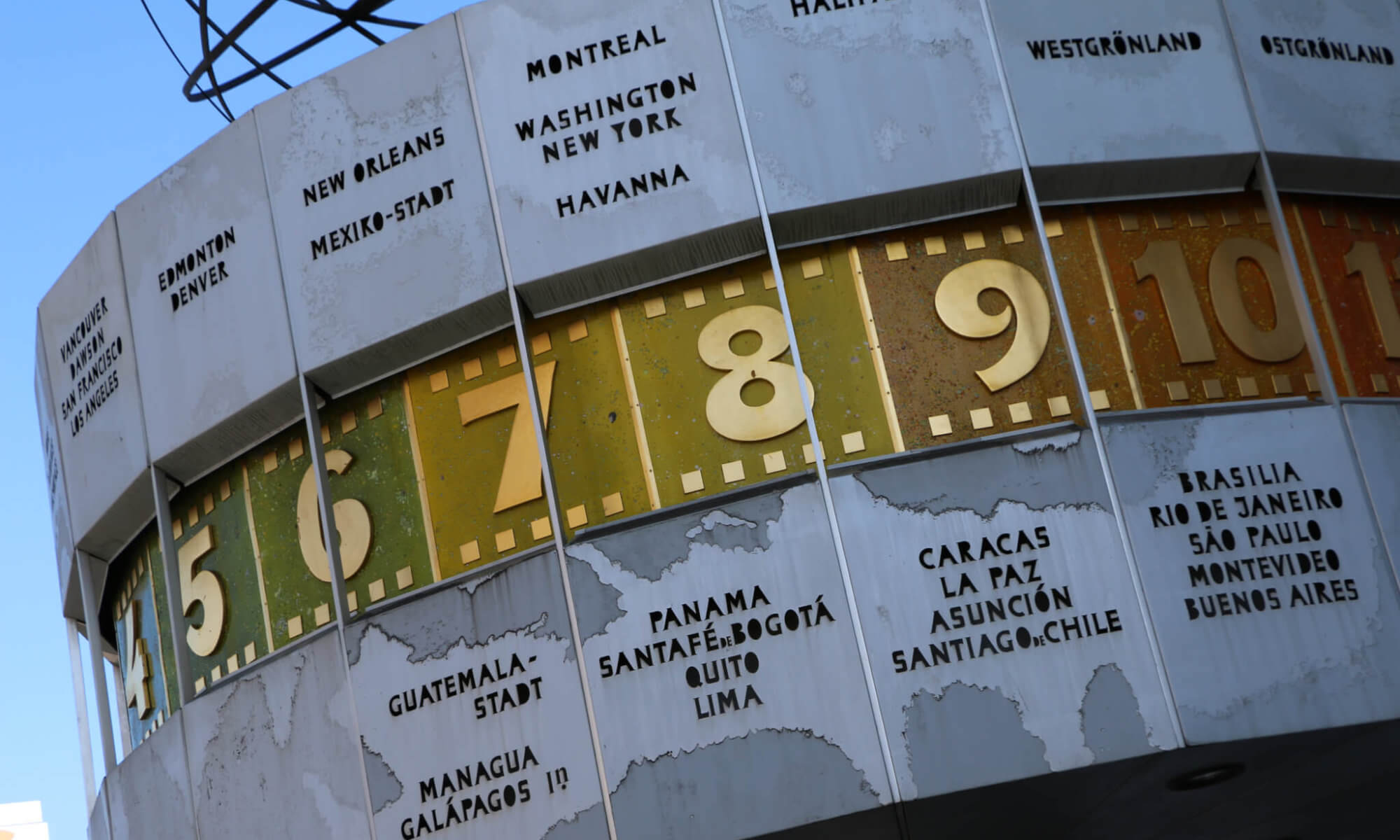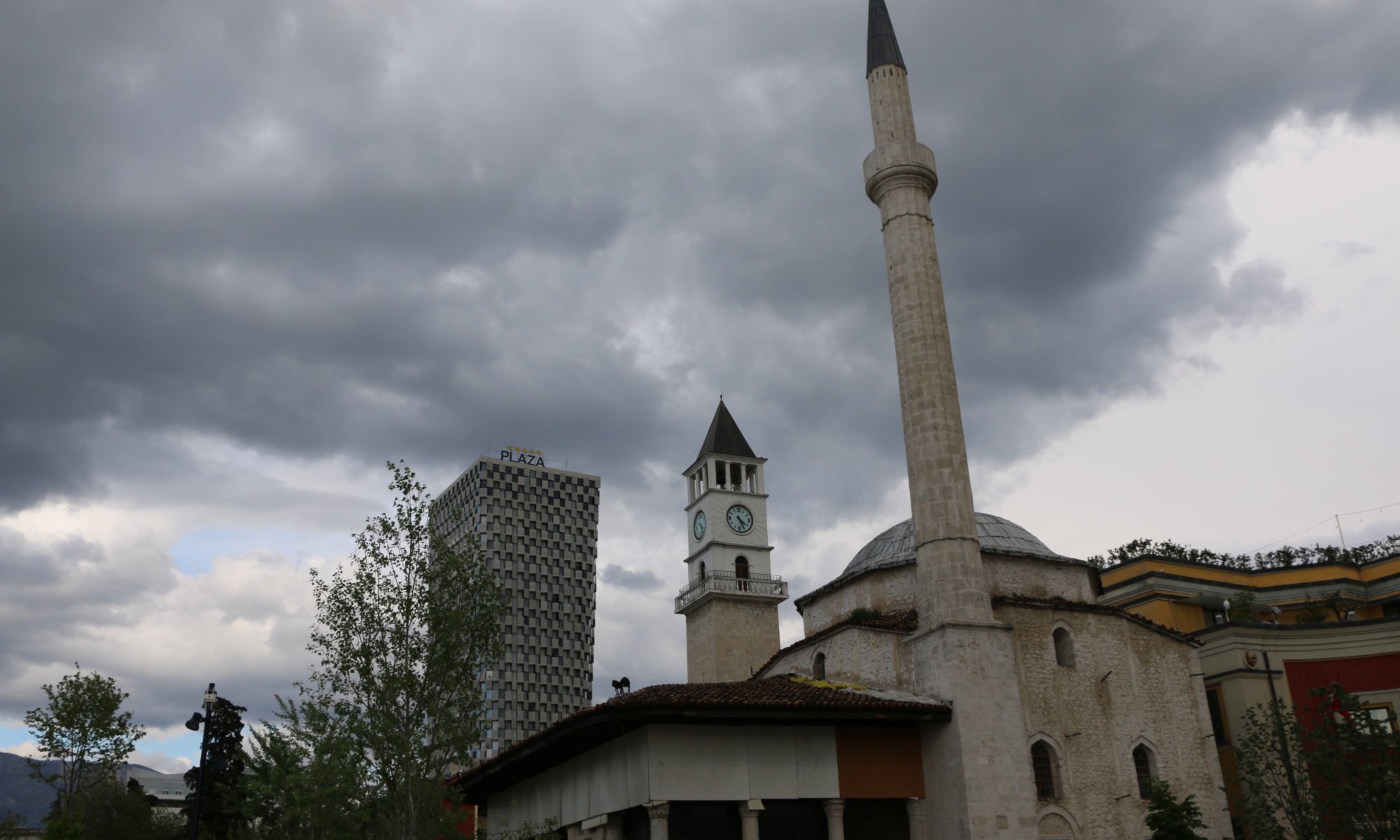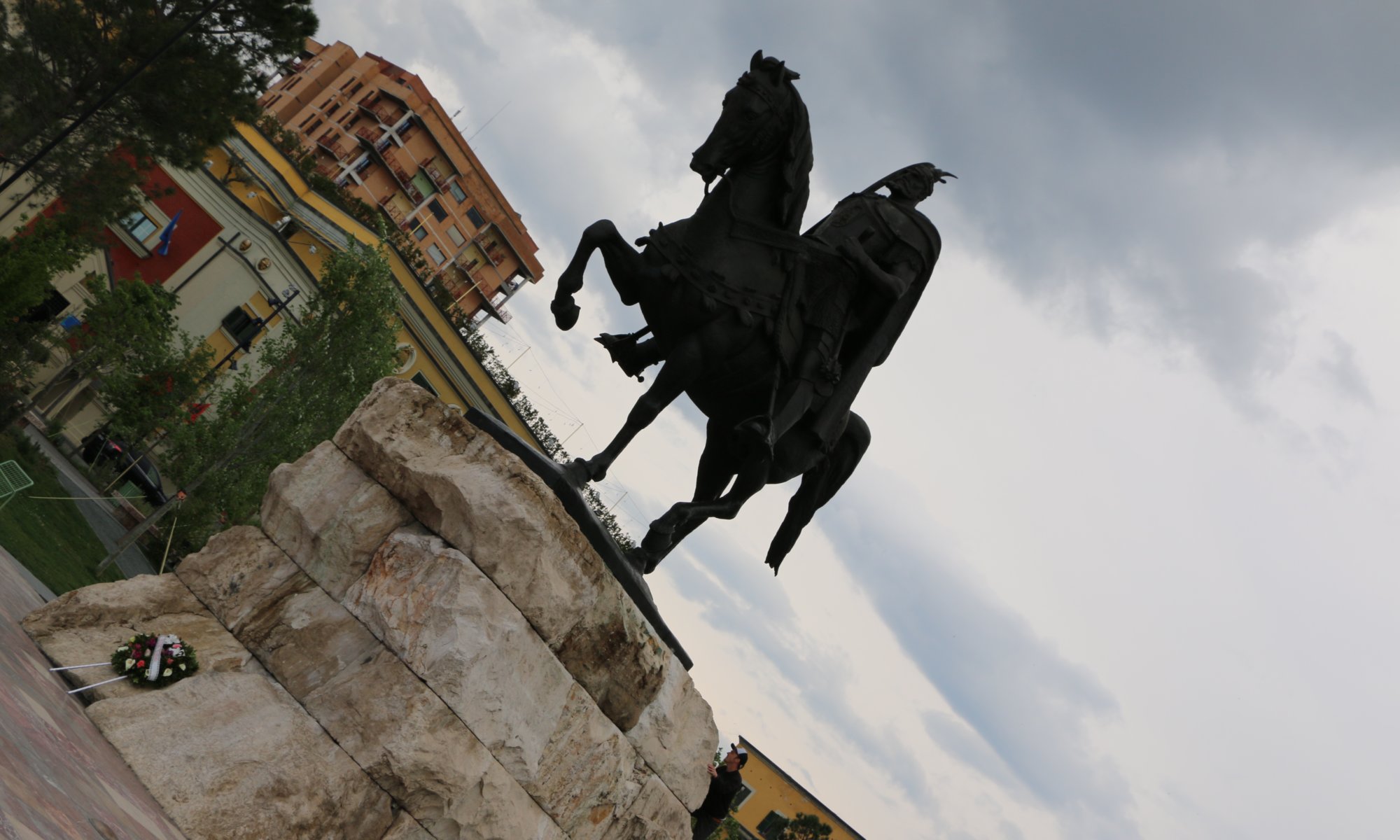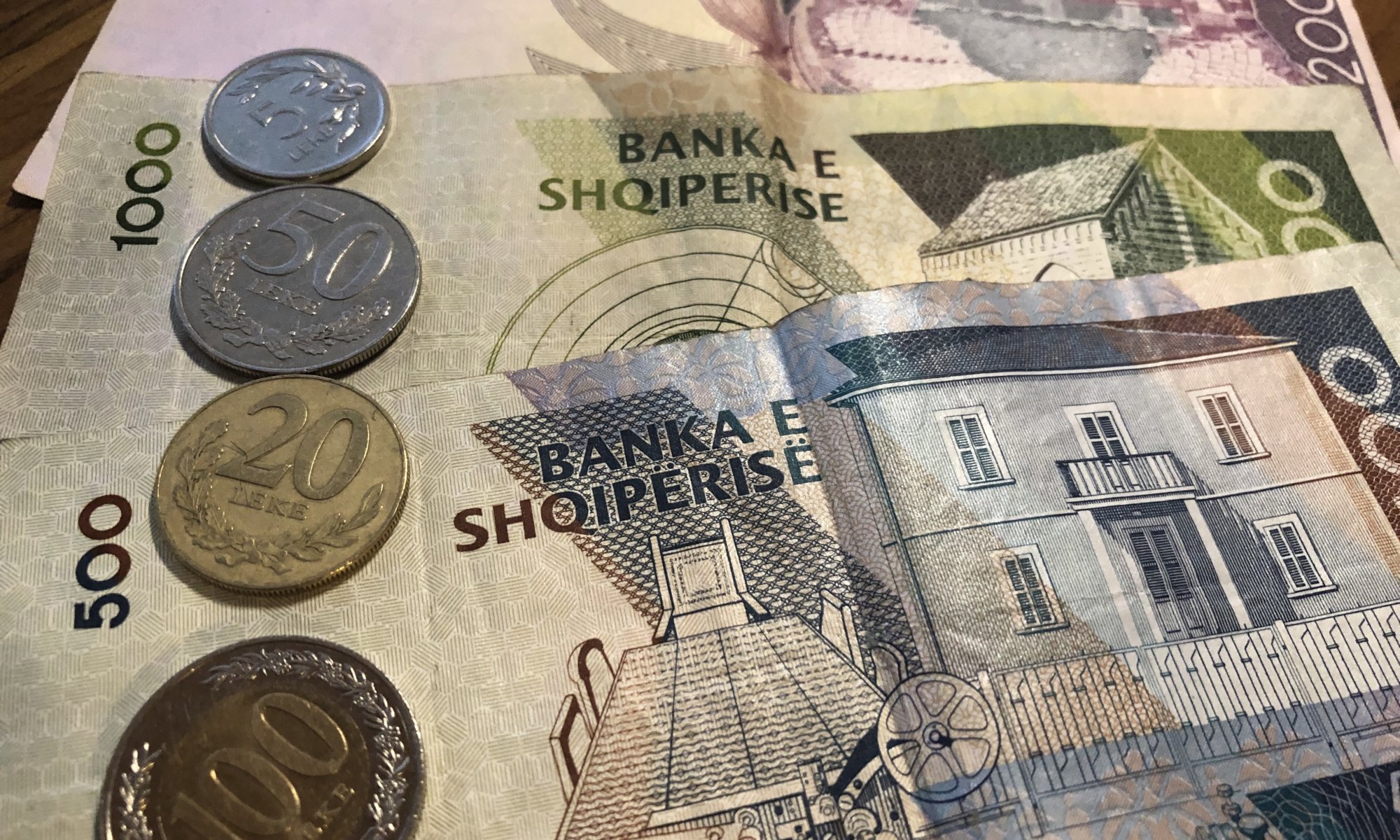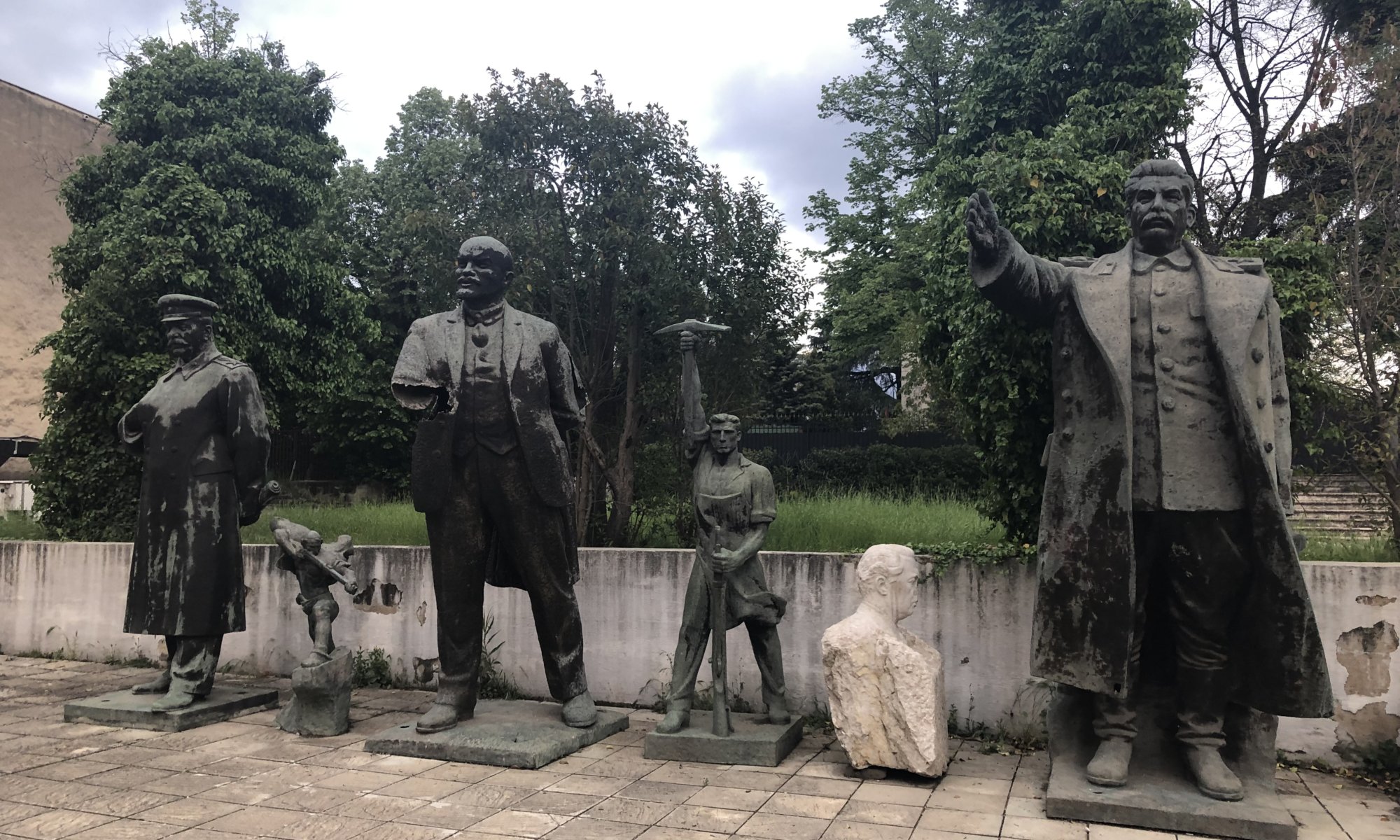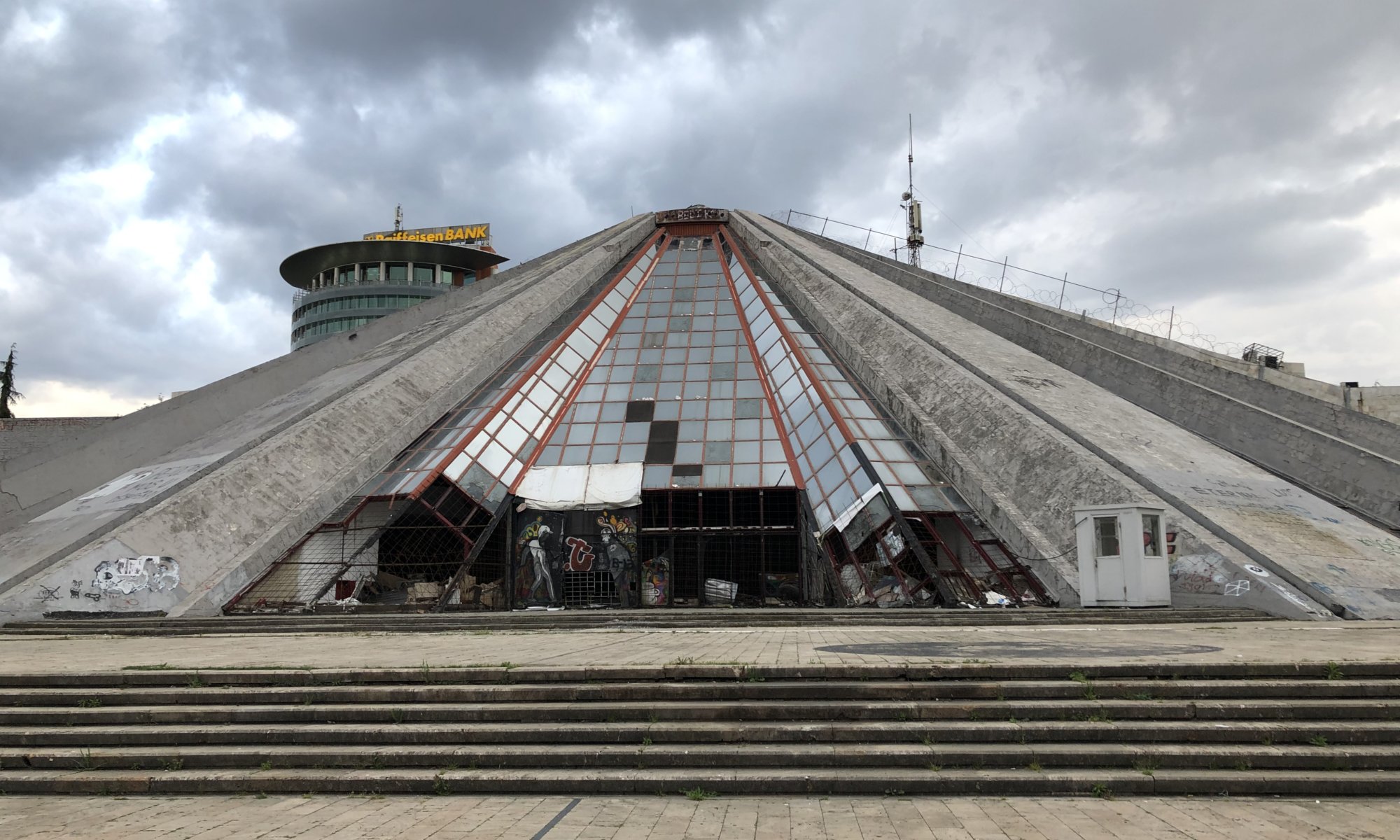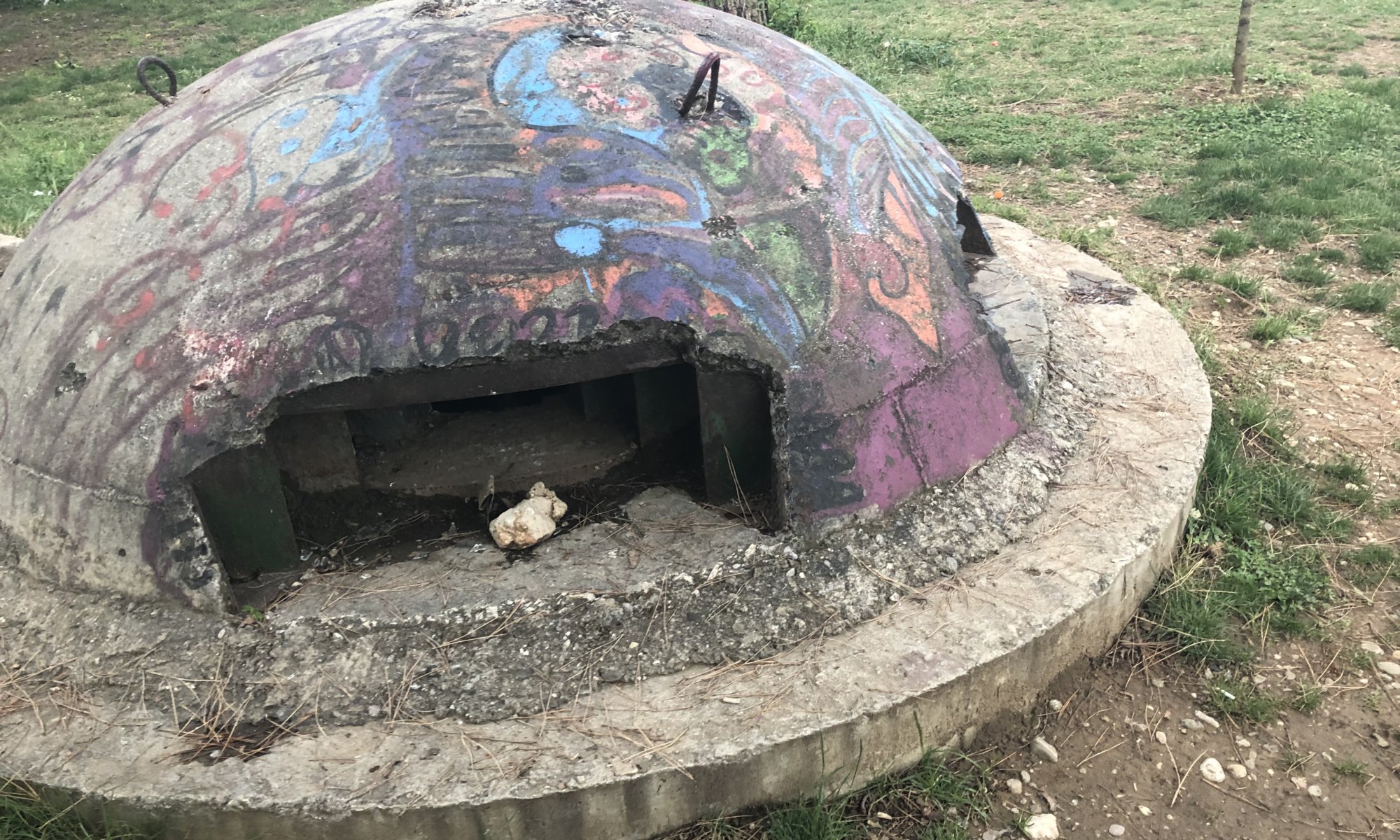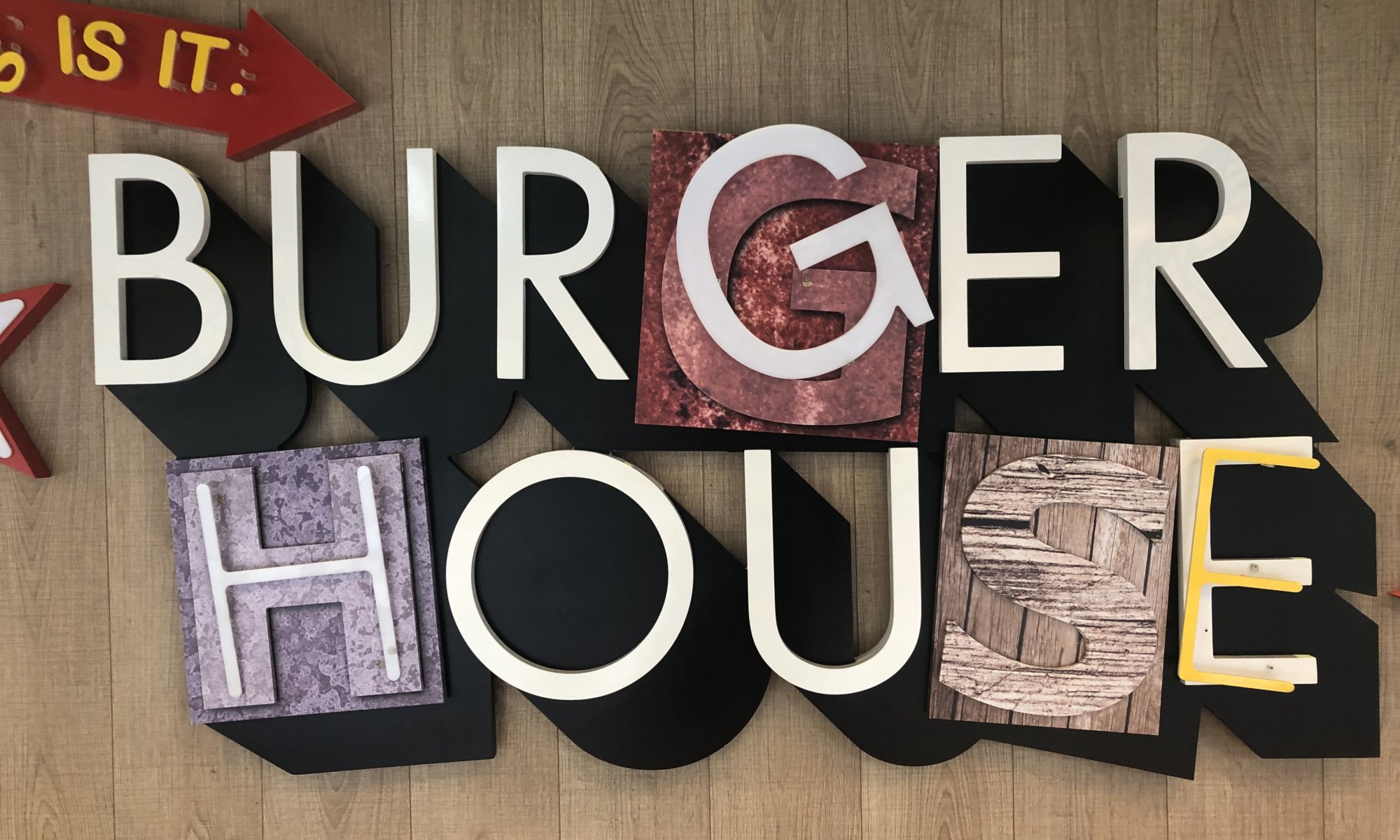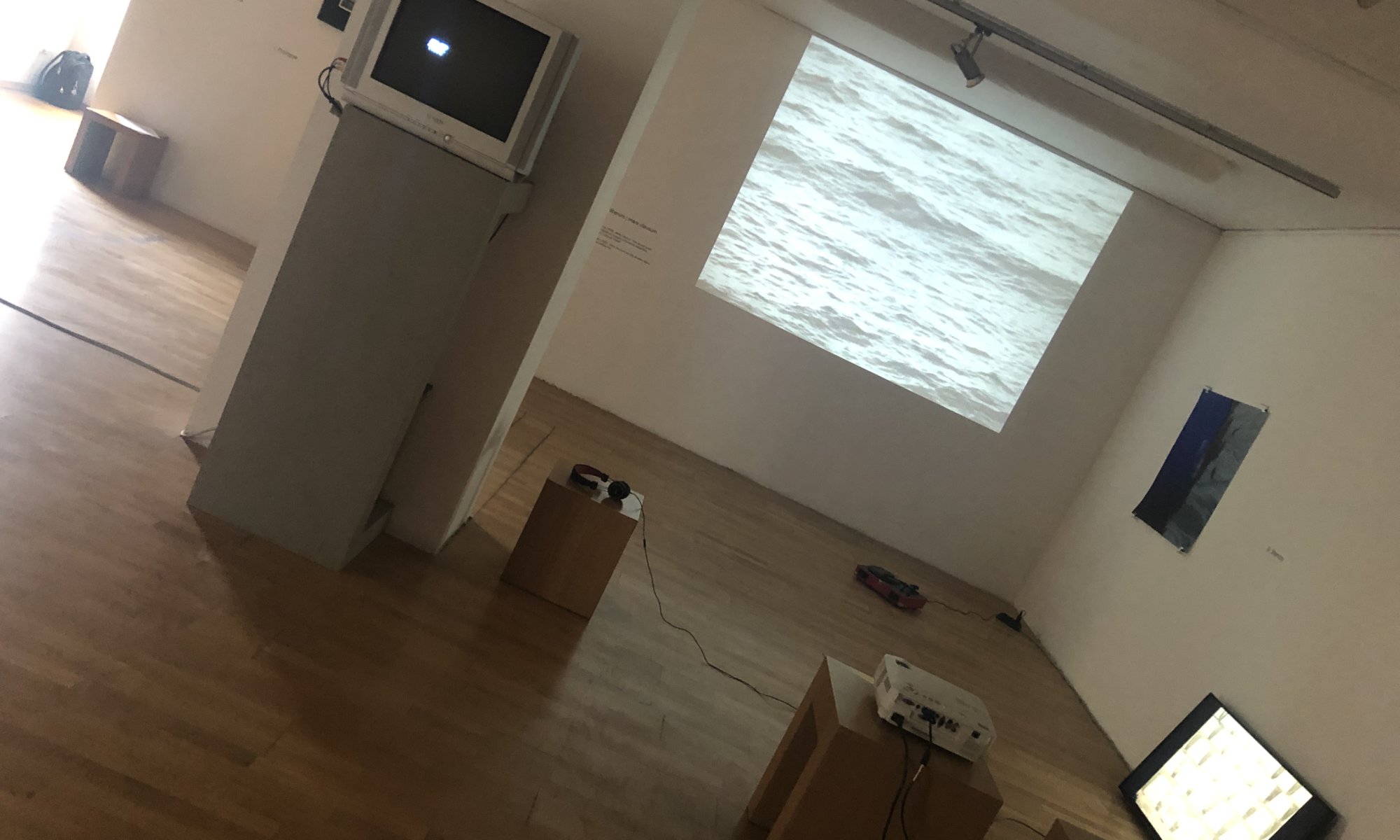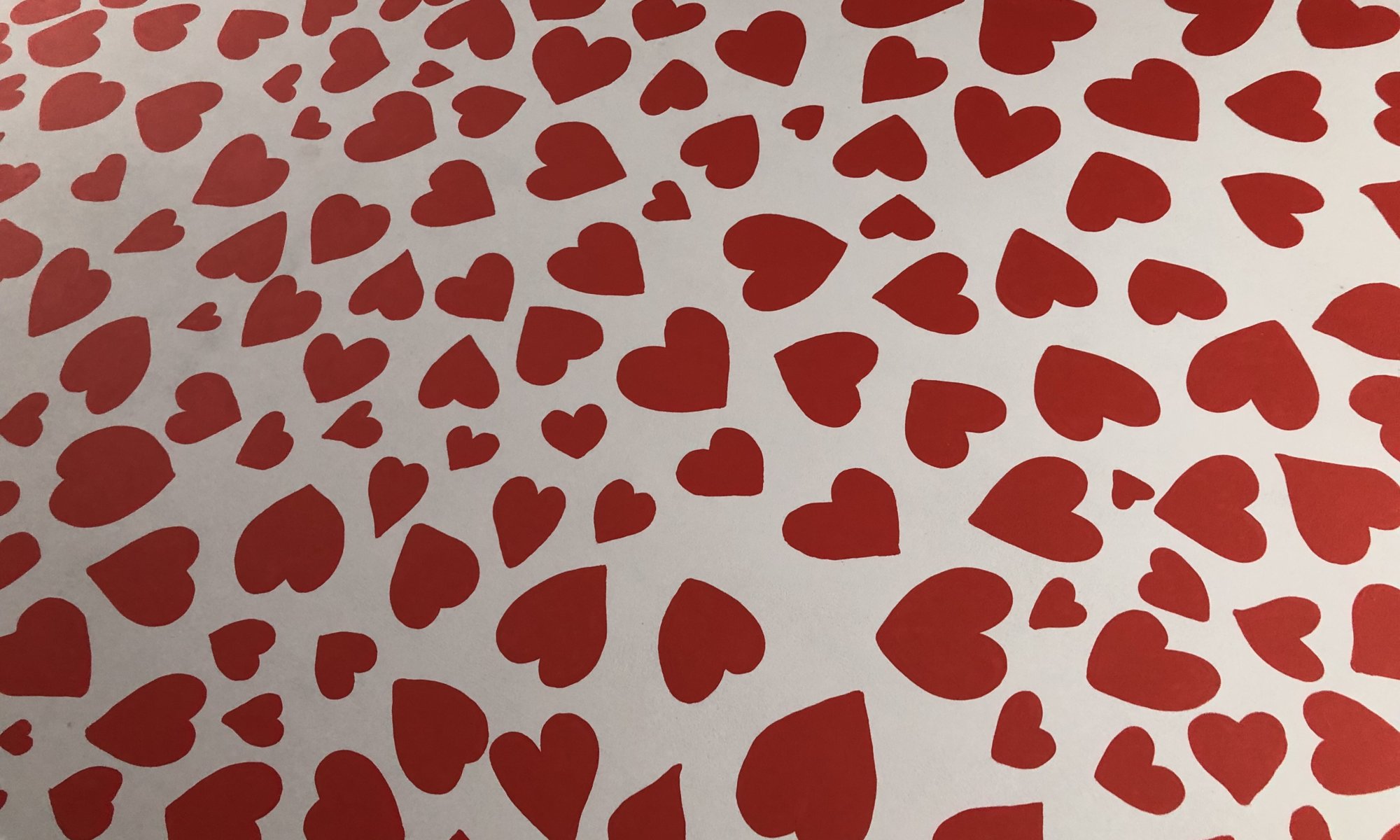The Et’hem bey mosque (Xhamia e Et’hem Beut) is a highly decorated tiny mosque in the center of Tirana, Albania – next to the Skanderbeg place (Sheshi Skënderbej). It was built between 1794 and 1821 and is a typical example of an ancient mosque with only one cupola. The mosque is much too small for such a house of prayer in the center of a capital city – but it will remain as it has its place in history.
Continue reading “Et‘hem bey”Skanderbeg
People going to Tirana, Albania most often start their visit at the Skanderbeg square (Sheshi Skënderbej), the heart of the city. It is a giant square created between 1917 and 1930. The square has been redesigned several times since then and contained first a fountain destroyed during World War II and afterwards a lot of space was used for roads, many cars were passing by each day. Today it is vast pedestrian-only area with many examples of Socialist architecture and an important memorial.
Continue reading “Skanderbeg”No import/export
The Albanian lek (ALL) is the current currency of Albania. It was introduced in 1925 and one lek was formerly divided into 100 qindarka (this subunit was removed in 1990). The lek has two specialities: it isn’t a freely convertible currency and its value is held stable against the Euro by the national bank. And (what I never had before) you are not allowed to import or export the currency.
Continue reading “No import/export”The past
Especially communist states love to create big statues of their leaders. But what to do with them when times change? In some countries they were simply destroyed, others created exhibitions like the Memento Park near Budapest, Hungary. In Tirana, Albania the big memorials have just been moved into the backyard of the national art gallery Galeria Kombëtare e Arteve. Without any explanation these contemporary witnesses are standing there like an odd silent crowd.
Continue reading “The past”Piramida
The pyramid of Tirana, Albania is a ruin at the city center: it was supposed to be teared down to make place for a new parliament building – now it is planned to be a youth centre, but yet no progress is visible. It was opened in 1988 is a museum about the former leader Enver Hoxha who died in 1985. On top of it there was a red star and red light illuminated its shape. It was the materialized personality cult arround Hoxha.
Continue reading “Piramida”Bunkers
If you’re coming to Albania you can’t overlook the massive amount of bunkers built by the communist regime between 1972 and 1984. Even in Tirana these mushroom-shaped bunkers can be seen everywhere in parks. Special companies led by the communist party organised their creation and throughout the country there were once 168.000 of them – that’s one bunker for every eleven inhabitants.
Continue reading “Bunkers”Burger House
It is just an ordinary burger restaurant at Tiranas nightlife zone Blloku: Goody’s Burger House – but it is a very easy way to stop your hunger and it can be found without any problem at the entrance of the city quarter when you follow the road Bulevardi Dëshmorët e Kombit from the city center to the south.
Continue reading “Burger House”ZETA
Maybe it is the smallest art gallery on the planet: the ZETA Contemporary Art Center at Tirana, Albania. It shows the works of Albanian and international artists in just one room. When you’re at Blloku just drop in for some minutes – you don’t need too much time. The hardest task is to find it within the Hekla Center.
Continue reading “ZETA”Blloku
The city quarter ‘Blloku‘ of Tirana, Albania is the place to be for young Albanians in the evening hours. Here you can find good bars and restaurants, next to the right places for nightlife. But that wasn’t always like this – the city quarter was during communist times reserved for the representatives and truest followers of the party (Partia e Punës e Shqipërisë, PPSH).
Continue reading “Blloku”REJA
When you’re walking through the city center of Tirana, Albania you might see a strange structure made of metal and plastics in front of the art gallery (Galeria Kombëtare e Arteve). It is called ‘REJA‘ meaning ‘The Cloud‘ – you can climb on top or take a seat underneath. Currently it is used for different cultural events.
Continue reading “REJA”